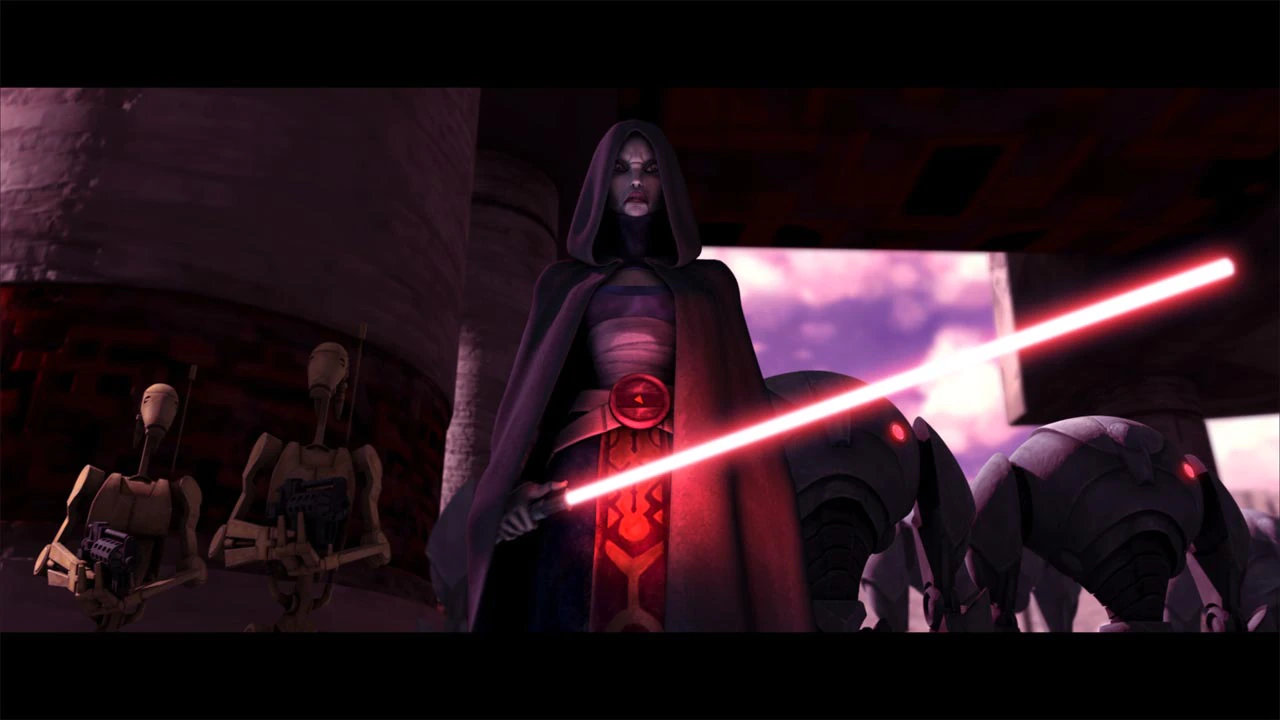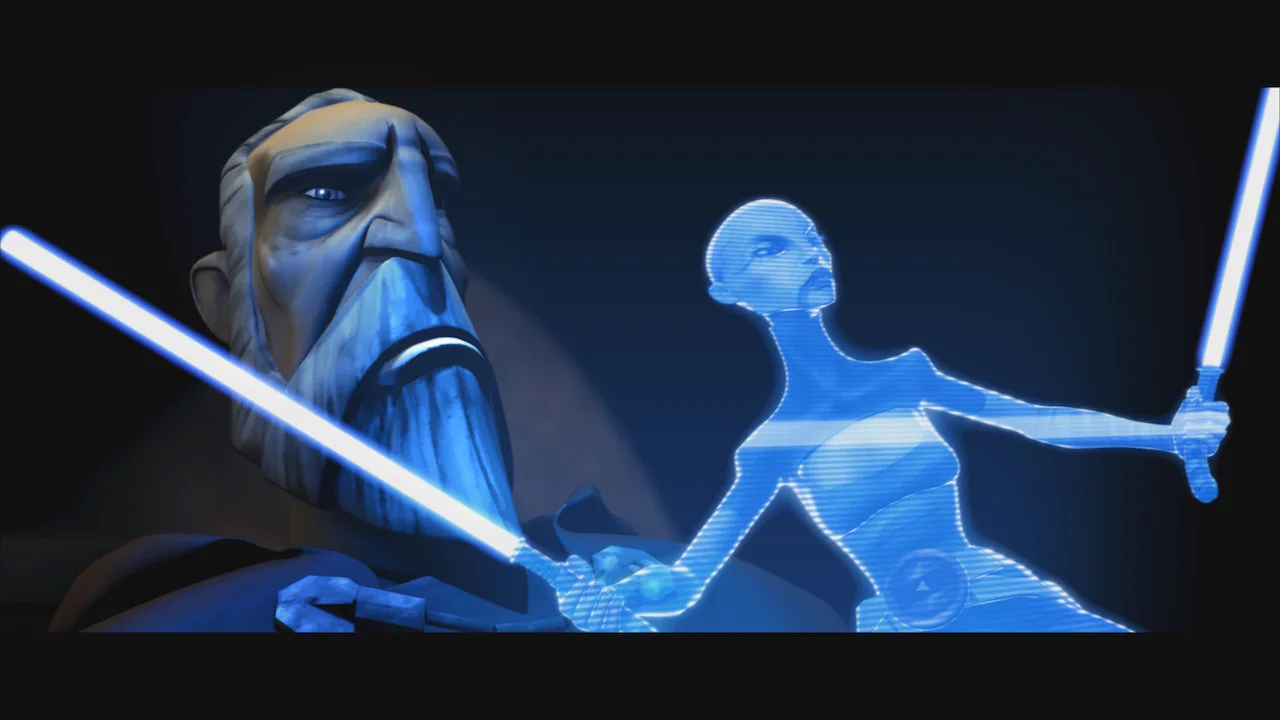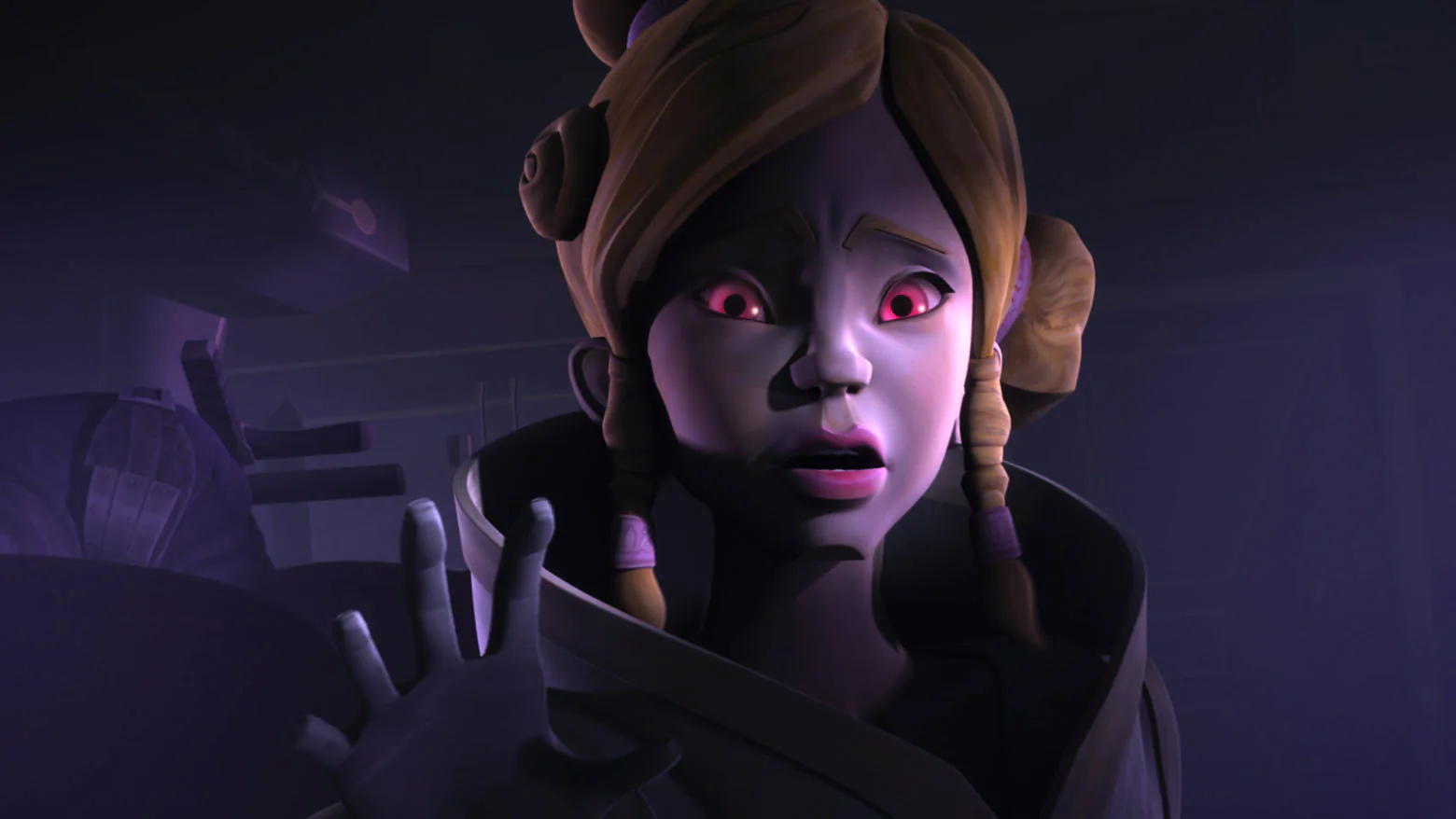Redemption and the Heroine's Journey: Asajj Ventress
How to write a convincing turn from the Dark Side

The Fairy-Tale Journey lends itself to character-driven stories in general. But it's particularly good for writing redemption arcs. I spotted two uses of the Fairy-Tale Journey in the redemption arcs of two characters in two animated series I greatly enjoyed binge-watching during my state's Covid Lockdown: Star Wars: The Clone Wars (2008 version) and Avatar: The Last Airbender.
In both series a villainous character — Asajj Ventress and Prince Zuko respectively — both undergo convincing changes from villain to good, or downright heroic. Showing how a character changes from bad to better is important, because a character's change of heart doesn't work storywise when it's merely an informed attribute. Change shouldn't be the result of a deus ex-machina or a contrivance.
So what would make a committed villain change? Why would someone with a strong sense of self, dedicated to doing nefarious deeds, decide — and decide is key here — to stop being evil? To start doing good?
Well, one answer is for the villain to be confronted with incontravertible proof something is wrong with them or their life choices. How does the Fairy-Tale Journey play into this? Well, if you read the previous posts and links, you probably already guessed. But just in case, the answer is simple:
Betrayal.
Recall that in the Psyche's classic fairy-tale journey and Inanna's journey, a betrayal is often the kick-off for the Journey. What's important about betrayals? The one who is betrayed has to re-examine everything. Everything they thought they knew about their betrayer, themselves, their lives, and so on. How could they have missed the signs the betrayer couldn't be trusted? Why didn't they see the backstab coming? So many questions to brood over!
What's more, villainous people are no different than the rest of us in that they associate with like kind. Birds of a feather...the point is that the villain in a story will align themselves with the type of people who can't be trusted. People who shouldn't be trusted. Consider that it's very plausible that one bank robber will shoot the other bank robber in order to get a larger share of the haul. Or in the case of Ventress, a Sith Lord may decide to kill his apprentice before she becomes powerful enough to off him first.

Crucial as well is the second step, the loss of a home. Having to go on the run means the Journeyer necessarily must avoid old haunts and current friends. Finding old friends or new friends becomes a must — such characters allow a writer to use their reactions to drive home the bitter lessons the Journeyer has learned. Especially if the lesson involves the ways the Journeyer earned his or her misfortune.
Inanna's Journey in particular lends itself to that lesson, especially if you account for the reason why she's visiting the underworld: she caused the death of her brother-in-law, Gulgalanna. This part of her story is covered in the Epic of Gilgamesh. Because Gilgamesh injured her pride by spurning her advances, Inanna set Gulgalanna, the Bull of Heaven — and her sister's husband — the task of killing Gilgamesh. With one snort from the Bull, the Earth opens up and hundreds of young men fall to their deaths. Enkidu, the best friend of Gilgamesh, tears off one of Gulgalanna's legs in order to save the city. Enkidu is slain by the gods, who jealously guard their power and prestige: no mortal can be allowed to attack the gods with impunity.
In the tale of her descent, Inanna does not appear at all remorseful for getting her sister's husband killed. Ereshkigal does not welcome her visit, and Inanna's experience in the Dark City is humbling. Surely you see the implications for a redemption tale, no?
As well, remember that in the Inanna-style fairy-tale journey, the Journeyer loses "weapons" upon reaching successive "gates" (trials). The weapon doesn't have to be literal; but they represent an aspect of the Journeyer. You want to focus on the aspects that involve the Journeyer's fears, or wrongly-held beliefs. In a redemption arc you won't want to skip the losing-the-weapons beats.
For Asajj Ventress the weapons involve aspects of her Sith code: survival over sacrifice, selfishness over selflessness, ruthlessness over compassion, and treating people as pawns.
Redemption arc of Asajj Ventress
Ventress is introduced as a formidable opponent for Obi Wan Kenobi and his apprentice, Anakin Skywalker. Occasionally, Skywalker's apprentice Ahsoka Tano faces off against her as well. Ventress begins the series as the right hand of Count Dooku, who was once Yoda's apprentice before turning to the Dark Side. Ventress is shown to be cunning and committed to the Sith way. She casually kills anyone who stands between her and her ambitions.
But then Dooku, the Sith lord she is apprenticed to, is compelled to get rid of Ventress, and he does so by informing her she has "failed him for the last time" as it were. He abandons her to die on a mission, thus kicking off her journey to redemption.
- Ventress is betrayed by Count Dooku, and left for dead (betrayed, dead to her old identity)
- She must go on the run (loses her home)
- She returns to her homeworld, Dathomir (enters the Dark Forest / Labyrinth)
- On Dathomir she is given succor by her clan (she finds friends and helpers)
- Still clinging to her old ways, Ventress and her clan use subterfuge to try and kill Dooku, but fail.
- Ventress recruits a new apprentice, Savage Oppress. She treats his compassion for his brother, Feral, as contemptible (symbolic of her brutal ruthlessness).
- Putting Savage through cruel, cold-blooded tests, she controls him to fight Count Dooku (symbolic of her selfishness)
- Savage turns on her during a battle against Count Dooku. She narrowly escapes Dooku's killing blow (loses a "weapon," that is, her Sith practice of treating people as pawns result in failure)
- She returns to her refuge to find it destroyed by General Grievous under Count Dooku's orders (forcibly expelled from the Dark Forest. This is also the loss of a weapon, for she valued her survival and now she's all alone).
- Utterly cut off from all support, she now accepts awakening (a second death, of her way of life).
- Exiled to the Outer Rim, she pretends to be a mere traveler (Journeyer in disguise).
- An incident in the Mos Eisley cantina on Tatooine obliges her to throw in with bounty hunters led by a juvenile Boba Fett (she learns to work).
- Their target is a young woman, Pluma Sodi, who has something in common with Ventress: she was ripped away from her family. This presents Ventress with one of two false rescue tests.
- The first false rescue test concerns whether she will deliver Pluma to the group's paymaster.
- Right alongside the first test is a second, wherein Boba Fett informs her she's only going to get a small cut of the pie when they deliver Pluma to their client.
These two tests bring suspense to the viewer: will Asajj Ventress deliver Pluma into the hands of an evil man, like the cruel and self-centered woman she had always been? Will she stay true to her Sith values and backstab Boba Fett?

Remember that Kim Hudson in The Virgin's Promise warns that false rescues ensare the one who accepts it into a new dependent world. Betraying Boba Fett would mean having to go on the run, again, and making another implacable enemy, again.
Do recall that the Clone Wars is "historical fiction" for Star Wars, as it takes place between Episodes II and III of the prequel trilogy, and we know Boba Fett is alive in Episodes V and VI of the original trilogy, so it's a given that Ventress doesn't kill Fett. What's not a given is whether she'd attempt to.
Fortunately for her, Ventress is a grown woman with the life experience and wisdom to foresee the consequences of choices. She side-steps the first trap, recognizing that she can't continue to be a cold-hearted cutthroat who only looks out for herself. Savage Oppress taught her the outcome of selfishly treating other people as playthings. Thus she abandons two weapons: treating people as pawns, and ruthlessness. Instead of treating Pluma as a means to an end, she treats her with compassion.
More, rather than engaging in the casual backstab à la the Sith, she finds a clever way to avoid making an enemy of Fett. With elegant ease she threads the needle of gaining profit, doing the right thing by her teammates and Pluma, and teaching Fett not to cross her. Thus she once and for all abandons her last weapons: the Sith practice of looking out for oneself alone, and the practice of betraying one's "master." Although Fett is technically just her employer.
Now Ventress begins to realize she has a future as something other than being the murderous apprentice of a Sith Lord. She can do other things with her life besides destroying the lives of others. Even more, she can also be kind. In her own irascible way, of course.
Yet, it's not enough to just have the villain begin to change, or say she's changed. We need to see her put her new values into practice.
The New Ventress
When Savage Oppress turned on Ventress, it was during a battle with Count Dooku. An excellent storytelling decision was for Savage to also survive that encounter. Because he's still alive, and teamed up with the revived Darth Maul, he is a specter that haunts Ventress. She can't be sure if he'll come upon her unawares, so she naturally insists on claiming the bounty against him when it's announced in the Mos Eisley cantina.
On this mission, Ventress discovers Savage and Maul torturing Obi Wan Kenobi (season 4, episode 22). In the past she always crossed swords (and double entendres) against Kenobi. The old Ventress would have allowed Kenobi to be killed, and would have arrogantly taken on the "Sons of Dathomir" (Savage and Maul) herself.
The new Ventress? The new Ventress loans Kenobi one of her light sabers, and helps him fight off Savage and Maul. Realizing she and Kenobi are outmatched, she doesn't object when Kenobi proposes a tactical retreat.
The fact that she helps Kenobi of all people is proof Ventress has changed. So it's credible and satisfying when she gives aid to Ahsoka Tano during Ahsoka's climactic Heroine's Journey arc in the final two episodes of season five. The audience can trust that Ventress is no longer evil and hateful. Her helping Ahsoka at this point wasn't a break in character "so the story can happen," but organic and hard won.
While the adult Ventress is wise enough to leap over the false rescue snare, Prince Zuko is a teenager. As a teenager he's not yet ready to separate from the family whose bosom he longs for. He's still seeking his father's love and approval, and sees no higher priority than this. But his father's approval is not worth obtaining. However, I will cover Zuko in another post.
Further Considerations
Returning to Inanna's experience, and how humbling it was — you may want to consider that in your redemption arcs for your characters, it is necessary that they are humbled. Ventress was humbled, going from the right hand of Dooku to a vagabond.

In the more convincing redemption arcs I can recall, the ex-villain is often made to pay a price for their previous crimes. Inanna paid her price when Ereshkigal hangs her like a piece of meat. The titular characters Xena and Angel pay for their crimes when they encounter former victims. As does Spike from Angel and Teal'c from Stargate: SG 1, and Cara Mason from the short-lived Legend of the Seeker series. Adalind Schade on Grimm pays a price for every single one of her evil schemes.
If a character has truly repented of past evils, they will actively seek to atone, and will not shy away from just punishment. Even, as Spike notes, they may not be guilty of the particular crime they're being punished for, but they did do things they should be punished for.
So, as you write your villain's turn from darkness, keep these elements in mind. Good writing to you!